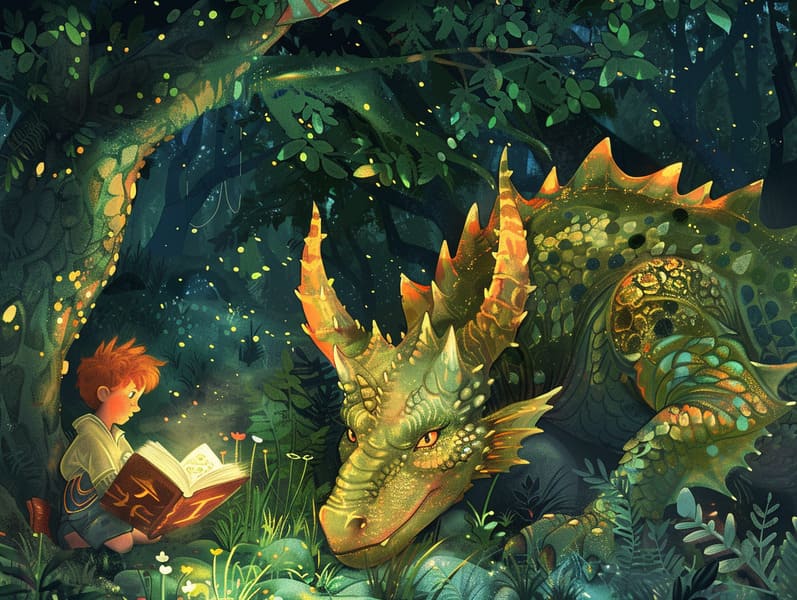The Journey of Short Fairy Tales with the Unwavering Radiance.
The Journey of Short Fairy Tales with the Unwavering Radiance.
Blog Article

Famous fairy tales have deep roots. These narratives have been transmitted from one generation to the next millennia before they were ever documented. They sprang from a variety of civilizations, including European traditions. They were initially shared among grown-ups, often carrying themes and messages concerning the societal norms and beliefs of the time.
The Brothers Grimm, Jacob and Wilhelm Grimm, were among the first to compile and publish many of these beloved tales. Their compilation, "Grimm's Fairy Tales," included narratives like "The True Bride," "Little Brother and Little Sister," and "Snow White," which have since become staples in the world of children's fairy tales. Similarly, H. C. Andersen's fantastical narratives, such as "The Story of the Little Mermaid," and "The Story of the Ugly Duckling," have gained the love worldwide, securing their place in the pantheon of famous fairy tales.
Despite their age, classic fairy tales remain as meaningful as ever, especially as children's night stories. These whimsical stories are now available in diverse formats, including richly illustrated books, fantastical animations, and internet fairy tales.
Their lasting appeal can be connected to several magical reasons:
Life Lessons: Traditional fairy tales often offer important moral lessons. Fairy tales like "The Tale of the Boy Who Cried Wolf" teach the virtue of being truthful, while "The Hare and the Tortoise" show the benefits of persistence and humbleness. These tales offer kids clear distinctions between right and wrong, shaping their moral compass in a mild yet important way.
Compassion and Knowledge: Classic fairy tales frequently include individuals facing trials and tribulations, stimulating readers to empathize with their struggles and back their triumphs. For instance, "Beauty and the Beast" teaches us the significance of looking beyond appearances to appreciate the real person of a individual, advancing perception and discernment.
Cultural Recognition: Many fairy tales are infused with the cultural contexts from which they developed. Discovering these tales can provide intriguing perspectives into different social structures, enhancing a sense of world respect and discernment.
Creativity and Imagination: The imaginative elements in ancient fairy tales—enchanted lands—unleash children’s fantasy worlds. These fairy tales bring readers to fantastical realms, provoking imaginative thinking and a sense of amazement that stays a lifetime.
Classic fairy tales are not only charming but also edifying. They serve as fascinating tools in building various cognitive and affective skills in young readers. When traditional fairy tales are spoken, they nurture language skills by showing new language items and intricate sentence structures. This practice also boosts hearing perception and mindfulness, as little ones keep up with the story, anxious to see what happens next.
Furthermore, reflecting on the themes and characters of ancient fairy tales can foster thought processes and critical thinking. Children are led to notice patterns, make predictions, and grasp cause and effect. These examinations also assist kids reveal their thoughts and feelings, nurturing their emotional intelligence.
In today’s online age, the existence of online storybooks has made these tales more reachable than ever. Online resources and programs supply huge assortments of ancient fairy tales that can be explored or listened through anytime, anywhere. Fairy tales read aloud are particularly well-liked, featuring an enjoyable way for young readers to enjoy these charming stories. Narrated books and read-aloud videos transport characters and settings to life, often joined by entrancing music and instrumentals that improve the story adventure.
The enduring charm of classic fairy tales lies in their ability to alter to current eras while sustaining their main lessons. Contemporary reinterpretations of these tales often present more representative figures and modern settings, making them meaningful to today’s audience. However, the essential messages of boldness, generosity, and impartiality remain unchanged, continuing to influence listeners of all ages.
Timeless fairy tales also offer a sense of coziness and understanding. They distribute a well-arranged narrative with a obvious beginning, middle, and end, often coming to a close with the resolution of conflicts and the triumph of morality over wickedness. This steadiness can be heartening for children, distributing a sense of steadfastness in an unstable world.
Classic fairy tales continue to entrance and train new generations, maintaining their appeal and pertinence in modern society. As kids' bedtime tales, they confer upon a perfect blend of enchantment and education, facilitating moral values, empathy, and creativity. The abundance of click here online fairy tales and the widespread nature of fairy tales read aloud affirm that these classic narratives remain obtainable to new generations.
By continuing and relating these fairy tales, we continue to appreciate the rich tapestry of folklore and cultural heritage. Whether you are enjoying a artistically illustrated book, delving into a web-based library, or hearing an narrated book, the captivation of classic fairy tales is always within reach. These stories teach us of the continued force of tales and its ability to hold us together across generations and cultures.
Regardless if you are discovering a vividly illustrated book, exploring a digital collection, or listening through an voice book, the spell of famous fairy tales is always within reach.
These fairy tales emphasize of the perpetual force of stories and its ability to bond us across centuries and lands, forming a connection that charms and informs alike.